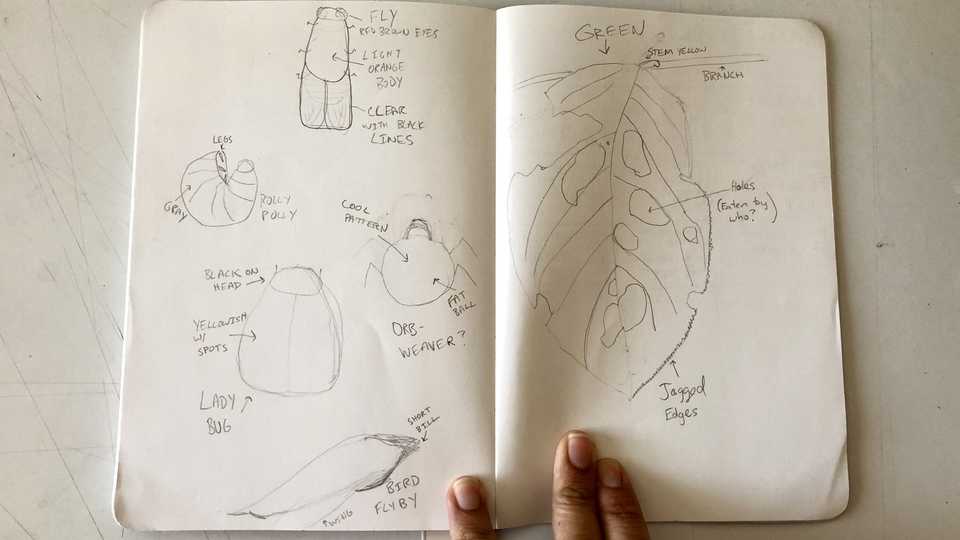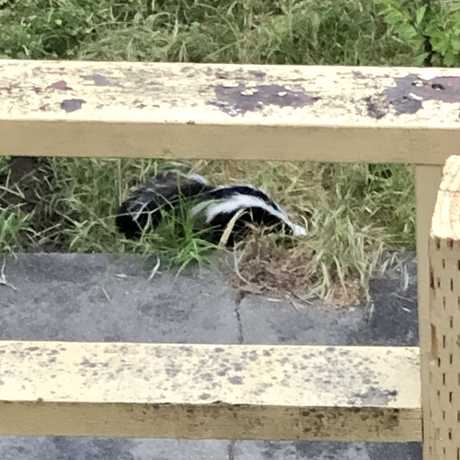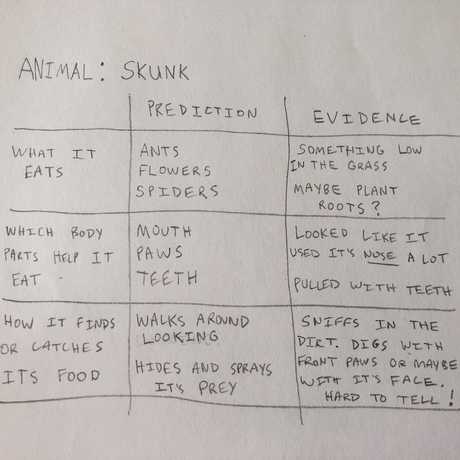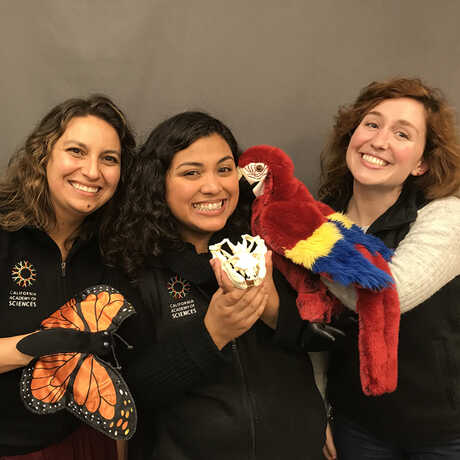- close observation of the living things in your neighborhood
- practice making predictions and gathering evidence

Inside the rainforest at the California Academy of Sciences, visitors can observe animals like the Macaw and Vine Snake using special body parts and behaviors — called Adaptations — to eat their food. A goal of the Academy is to better understand adaptations all around the world.
You can help us by exploring the question: How do your local animals get their meals?
- paper or science notebook
- pencil
- a device to take photos (optional)
Make sure to copy 1 or more Adaptations Charts for observing animals on a piece of paper or in your science notebook.
You can also reference the below video for instructions, as well as some great examples of backyard observations with Academy Educator, Dan!

1. Pick a location – you can watch animals from almost anywhere. Some ideas:
- from a window
- on the sidewalk
- in a yard
- in a nearby park
2. Look out for animals! Try to pick one that will stick around for several minutes. Animals that disappear but then come back are good too. Think big like Coyotes or Squirrels - think small like Ladybugs.
3. Found an animal? Fill in the “Prediction” column before you observe it eating.
4. Start gathering evidence: What do you notice? Observing animal adaptations is a skill that takes practice and patience. To help you can:
- make notes
- do a scientific sketch
- take photos/videos
5. Record your evidence in the “Evidence” column.
Trouble gathering evidence? Try observing more than once and at different times of the day. Remember the important thing is that you have fun practicing close observation.When you finish, do some research about what and how your animal eats.
Now it’s your turn to design your own creature to live in your neighborhood.
1. The first step in designing your creature is to think about what it eats. What is your creature going to eat?
2. Think about adaptations it needs to eat and catch food.
Some questions to think about when designing:
- Does it see its food? Hear it? Smell it?
- What size is the food?
- Does it need to chew or can it swallow things whole? Or something else?
- Does it use its limbs to eat? How?
- Where does it eat? Is it easy or difficult for your creature to get its food?
3. Draw your creature and its food.
Be sure to label any adaptations, body parts, and actions, to help it eat its food.

Discuss as a whole group or with a science partner. Your partner can be a family member if you did the activity together.
1. Think about 1 animal you observed.
- Tell a short story of how that animal survives.
- What adaptations did you learn more about?
- Did you gather any evidence that surprised you? Explain.
2. Think about your creature creation.
- What was it like to make your creation?
- Describe your favorite adaptation you designed.

We, the Academy educators, would love to know more about the living and made up things where you did your observations. If you want to share anything you've noticed, your sketches, or photos/videos of the animals you observed or created we would be delighted to see them.
You can share them through your teacher or send them to us at this email address: distancelearning@calacademy.org